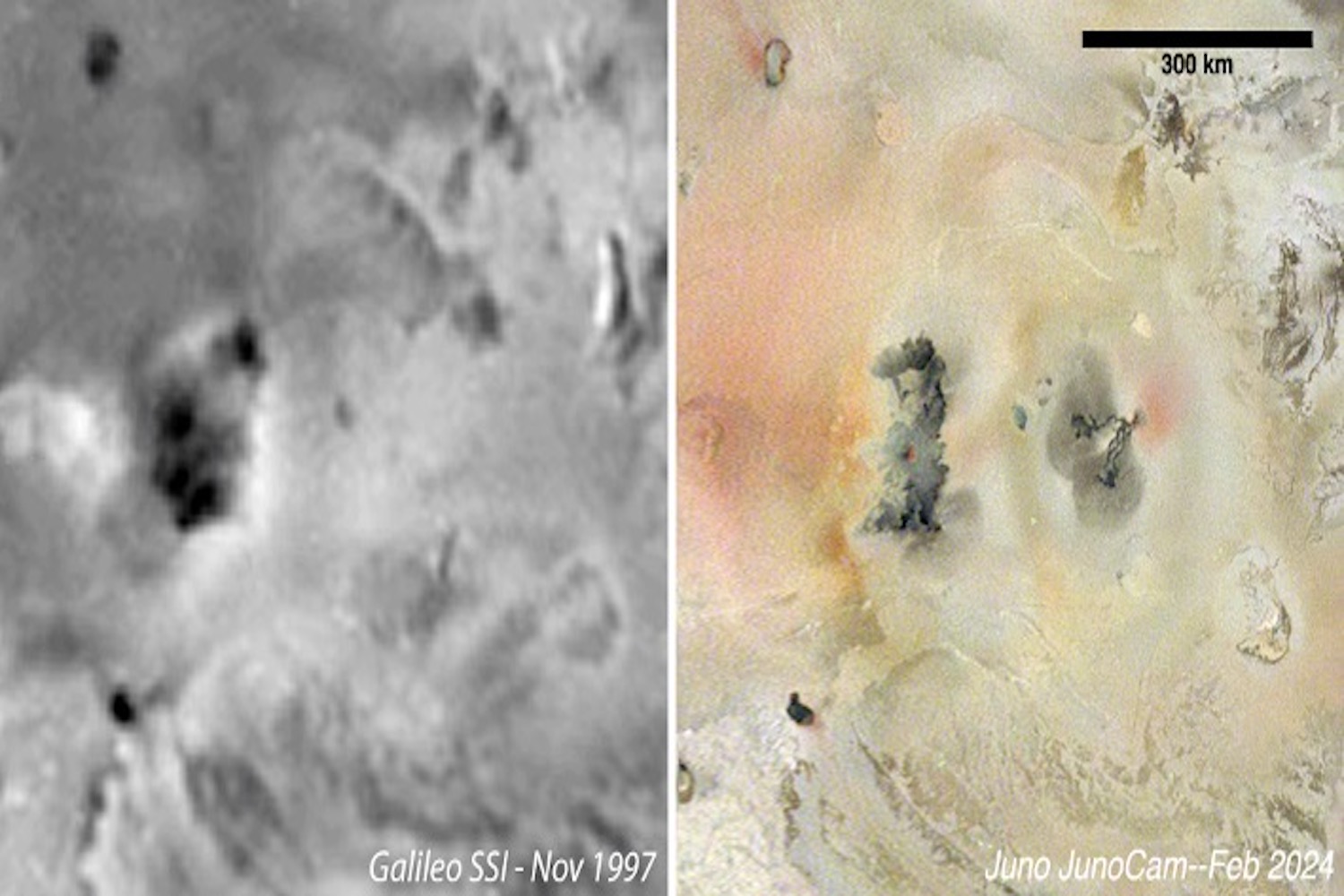Change can be scary. Luckily, nobody is particularly close to a very big change on Jupiter’s moon Io, where a massive new volcano has been spotted in a previously flat area.
The volcano has multiple lava flows and volcanic deposits which cover an area of over 110 square miles (285 square kilometers). Manhattan, for the sake of comparison, is a bit under 23 square miles (60 square kilometers), and is only slightly less hot than magma during a typical NYC summer. It was spotted by NASA’s Juno spacecraft during a February 2024 flyby from a distance of 1,572 miles (2,530 kilometers).
The images were first presented at the Europlanet Science Congress in Berlin earlier this week. They were taken by Juno’s Junocam, which captures images using light in the spectrum visible to human eyes. Although Io is the most volcanically active entity so far discovered anywhere in the universe, this particular region on the moon looked featureless in previous images, taken by the Galileo spacecraft in 1997.
“Our recent JunoCam images show many changes on Io, including this large, complicated volcanic feature that appears to have formed from nothing since 1997,” said Michael Ravine, an advanced projects manager at Malin Space Science Systems, the company that operates the JunoCam, in a release.
In the images, a red stain appears beside the volcano, caused by sulfur spewing into the air and settling back onto the surface. The gray, circular deposits seen surrounding the area are frozen material from Io’s surface that vaporized around two lava streams, each of which stretch for over 62 miles (100 kilometers).
Juno keeps capturing images that make Io seem like a fascinating, albeit hellish, place. During the same flyby, the spacecraft’s instruments detected islands and steep mountains inside a literal lava lake, not unlike the one in which Darth Vader built his castle.
NASA launched the Juno spacecraft in 2011 with the purpose to learn more about Jupiter and its moons. Since arriving at Jupiter in 2016, Juno has been in a 53-day orbit around the planet, allowing it to study both the gas giant and its moons, including the volcanic Io and the icy Europa. Data from the JunoCam is made available to the public, allowing anyone to create their own images of Jupiter and its moons.
Io is over 460 million miles (740 million kilometers) away from Earth, there’s much scientists can learn from it. Because of how anomalously volcanically active it is (there are an estimated 400 active volcanoes on the moon, which is only slightly larger than our own Moon), it can be used as a point of comparison to young terrestrial planets. That can allow us to learn more about how such planetary features like mountains come about.














